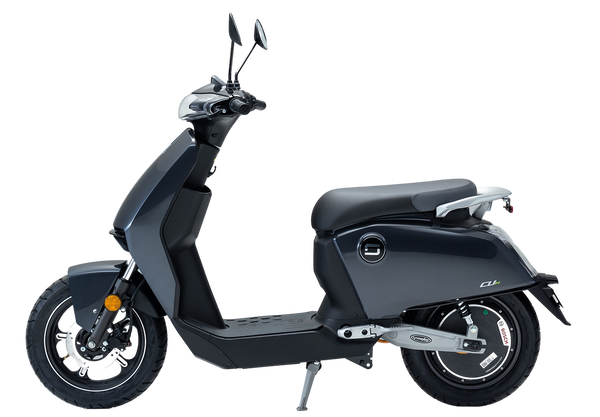Euro 5 regulations and CO2 - is an electric motorcycle that much better?
What does a 'Euro 5 engine' mean, really? How much CO2 from an engine is too much - and is an electric-powered motorcycle that much better for the environment?

Electric transportation is going to become the norm of transportation in a number of years. There’s no doubt about it. But how green is electric? The energy in battery-powered vehicles still has to still be generated, and and with coal and gas still being the energy of choice in the UK, it's not really very good for the environment either, is it?
The numbered Euro regulations (now up to Euro 5 for motorcycles) were brought in as a means to limit the amount of carbon monoxide, hydrocarbons and nitrous oxide, with Euro 5 introducing a limit to non-methane hydrocarbons. Electric vehicles are growing in popularity, and are not subject to emissions regs for this reason.
2021 Honda X-ADV review
It’s all very scientific stuff, and if I’m honest I’m amongst those of you who may squint and think ‘but… what does it all mean?’.
Euro 5 regulations really just boil down to reducing the allowed emissions from engines, and manufacturers have been working hard to get their motors to be that tiny bit greener - like producing less CO2 per km, and this is the measuring stick used between manufacturers (you’ll find it listed on most spec sheets now). So a Euro 5 engine is just compliant to those regulation standards.

So the official benchmark for manufacturers with CO2 is X grams per km - but that’s strange, it’s a gas measured in ‘weight’? True, but it’s more about the mass of CO2 rather than the ‘weight’ of a gas.
Another way to think about it is in litres, and that’s exactly what Dan Frost at VMoto looked at. When translated to litres, 100 grams equals 54.47 litres of CO2 - which sounds a hell of a lot more than 100 grams.
Euro 5 emissions regulations & CO2
One argument against electric bikes is that generating that electricity is just as bad as burning fuel. It's not quite the case, though, and the cheaper and greener electricity becomes, the more sustainable and environmentally friendly it becomes too - in 2020 a figure of 256 grams of CO2 per Kw generated was used to quantify this.

For some comparisons, a Prius emits 97 g/km which is 53 litres per Km (and considered pretty good), a Honda CB650R emits 113 g/km (62 litres), a BMW R1250GS emits 110 g/km (60 litres), and a Yamaha R1 emits 168 g/km (92 litres).
If it’s renewable energy, the equivalent CO2 figure is effectively 0, but noted on the site: comparing Kw to range, Super Soco models produce just 7.5 grams per Km, whilst a Honda PCX would produce 49 grams per Km.
Interesting reading, when you consider the motorcycle CO2 output is near enough equivalent to the CO2 outputs for most normal cars - for example, a 1-litre Fiesta is 108 g/km. I suppose it’s the same fuel being burnt, which is why alternative fuel types which are more environmentally friendly, like E10, exist.

Here’s a handy calculator you can use if you want to work out your own figures of CO2 generated over your commute (or rides), whilst also sussing out the litres per Km and estimated annual outputs. Perfect if you’re worried about your carbon footprint…











